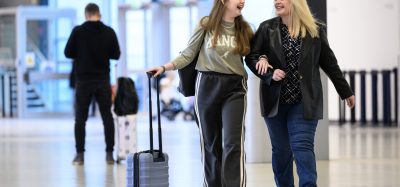Interview Spotlight: Andy Taylor, Chief Solutions Officer, NATS
- Like
- Digg
- Del
- Tumblr
- VKontakte
- Buffer
- Love This
- Odnoklassniki
- Meneame
- Blogger
- Amazon
- Yahoo Mail
- Gmail
- AOL
- Newsvine
- HackerNews
- Evernote
- MySpace
- Mail.ru
- Viadeo
- Line
- Comments
- Yummly
- SMS
- Viber
- Telegram
- Subscribe
- Skype
- Facebook Messenger
- Kakao
- LiveJournal
- Yammer
- Edgar
- Fintel
- Mix
- Instapaper
- Copy Link
Posted: 14 March 2019 | Andy Taylor | No comments yet
Andy Taylor, Chief Solutions Officer for Digital Towers at NATS, reveals how industry collaborations are revolutionising digital tower offerings to challenge assumptions and pave the way for smarter digital airport operations.
We need to challenge our assumptions around what a digital tower is. A digital tower can offer far more than a recreation of an existing airport operation in a remote location.
For example, we are currently working with Searidge Technologies at Heathrow Airport to integrate digital tower technologies with the existing tower to achieve major operational improvements. This isn’t a traditional tower control or digital tower remote service, but a solution which takes the best of both to revolutionise our offerings to all airports.
How flexible are NATS’ remote digital tower solutions?
Together with Searidge, NATS can deliver a modular, scalable digital tower solution for any airport. That could include just the technology, or a full turn-key solution, with layers of safety assurance, transition planning, validation and training.
We take into consideration the size of the airport to determine the benefits. For example, in large hub airports, solutions are focused on providing improved operational performance, including digitising conventional control tower facilities. In medium-sized regional airports, solutions are focused on providing multiple layers of benefits, including replacement/ training, contingency and rapid deployment. We can also offer three levels of integrated simulators (making assets more cost-effective and multi-purpose). Whilst for small airfields, the solution could include provision of ‘tower within a tower’ operations.
How do you deal with the safety and security issues surrounding handling and protecting large quantities of operational data?
Safety is always our priority. Searidge leads the sector in the use of artificial intelligence (AI) in airport operational environments, and while this is cutting-edge, it’s also proven, having completed more than two years of research and development including trials at several locations.
During the trial underway at Heathrow, the AIMEE AI system will study around 50,000 arrivals to ensure the accuracy and integrity of the system. NATS is liaising with UK CAA and only when the team has absolute confidence in the system will we deploy its full capabilities across the operational environment.
In terms of cybersecurity, as a part of UK critical national infrastructure, we constantly review our procedures and technologies proactively guard against the latest threats. We take a similar approach to information security for international deployment of turn-key digital tower technology solutions, such as those in Singapore.
Are there case studies of note you’d like to discuss?
Heathrow’s 87-metre control tower is the highest in the UK and provides commanding views, but its height can also mean it disappears into low cloud. When this occurs, it can affect controllers’ visibility, which can reduce the landing capacity by 20 per cent – equivalent to losing eight landings per hour. For an airport like Heathrow which is scheduled at 99 per cent capacity, this can create ripples of disruption.
To prevent this, NATS has deployed an ultra high-definition (4K) camera network at strategic locations around the airfield – the views from which are being fed into an AI platform called AIMEE, created by Searidge Technologies. The AIMEE platform can interpret the images, track the aircraft and inform the controller when it has successfully cleared the runway to greater accuracy than traditional surveillance systems alone.
Non-operational trials are now underway to understand the feasibility of introducing the technology into service as early as next year. From now until March 2019, AIMEE will study the behaviour of thousands of arriving aircraft to ensure the accuracy of the system. The project findings will then be submitted to the UK CAA for its assessment.
Through the implementation of this digital tower solution we are aiming to reclaim the previously lost 20 per cent capacity and add that additional resilience to the operation.
Issue
Related topics
Air traffic control/management (ATC/ATM), Airport development, Airside operations, Cyber-security, Digital transformation, Regulation and Legislation, Remote digital towers, Safety
Related airports
Related organisations
Civil Aviation Authority (CAA), National Air Traffic System (NATS), Searidge Technologies


















